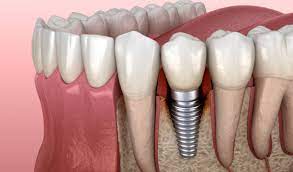How Tooth Type Impacts Extraction: A Closer Look

Tooth extraction is a widely performed procedure, often necessary when a tooth becomes damaged, infected, or misaligned. While many factors contribute to the overall process, the type of tooth being removed plays a significant role. Each Tooth extraction cost in the mouth serves a distinct function, and these differences impact the complexity of the extraction.
Categories of Teeth in the Mouth
The human mouth is comprised of several types of teeth, each positioned in specific locations to perform unique roles. These include incisors, canines, premolars, and molars. These variations in structure and function result in different levels of difficulty when it comes to removal.
Incisors and Simpler Removal Processes
Incisors are located at the front of the mouth and are relatively small with single roots. They are generally more accessible due to their position and shape. Their removal is often straightforward, as these teeth do not have deep roots or surrounding bone that complicates the process. Their placement in the jaw allows for better visibility and ease of movement during extraction, making the overall procedure less complex.
Canines and Their Unique Challenges
Canines, positioned at the corners of the dental arch, serve as tearing tools and have longer roots. These roots can be deeply embedded into the jawbone, making their removal more intricate than that of incisors. While they are more visible than back teeth, their anchorage and length demand additional care during the extraction process. These teeth may also impact neighboring structures, adding to the technical considerations involved.
Premolars and Dual-Root Considerations
Premolars sit between canines and molars and often come with one or two roots. Their extraction requires attention to the number of roots and how deeply they are embedded. In some cases, these teeth have roots that curve or split in ways that necessitate more detailed preparation and careful handling. Depending on their anatomical features, the complexity can range from moderate to advanced.
Molars and Their Multirooted Complexity
Molars are located at the very back of the mouth and are typically larger and have multiple roots. Their removal is more involved due to their size, root structure, and placement. These teeth often require more than basic techniques, especially when the roots are curved, fused, or widely spread. Accessibility is also a factor, as working at the rear of the mouth involves limited visibility and space. Additional measures are usually needed to ensure the tooth is fully and safely extracted.
Impacted Wisdom Teeth and Surgical Complexity
Wisdom teeth, also known as third molars, often erupt in ways that cause impaction or partial eruption. When a tooth does not fully emerge, it may remain trapped under the gum or bone. This condition requires surgical techniques for removal. Incisions might be necessary to access the tooth, and sometimes it must be divided into smaller pieces. The presence of impaction significantly increases the overall difficulty of the extraction process.
Upper vs. Lower Teeth: Position Matters
The jaw’s structure differs in the upper and lower parts of the mouth. Upper teeth are typically easier to access and extract because the bone in the upper jaw is less dense. In contrast, the lower jaw has a denser bone structure, making extractions more challenging. This difference influences how the extraction is approached and completed. The angle, visibility, and pressure required vary depending on the location.
Root Shape and Its Influence
Root shape plays a crucial role in the process. Teeth with straight roots are easier to remove, while those with curved, hooked, or bulbous roots present additional challenges. Complex root configurations require strategic maneuvers, often involving specialized tools. In some instances, the tooth may need to be removed in sections to avoid damage to the surrounding bone.
Eruption Stage of the Tooth
The stage at which a tooth has erupted influences the approach to its removal. Fully erupted teeth above the gumline are more accessible and often simpler to extract. Teeth that are only partially erupted or have not emerged at all are more involved. These situations may require incisions and bone removal for successful extraction. Eruption status also determines the type of instruments and techniques used during the process.
Surrounding Structures and Their Role
Each tooth exists in proximity to other vital structures such as nerves, sinuses, and neighboring teeth. In certain areas of the mouth, these structures can complicate the extraction procedure. For instance, molars located near large nerve bundles may require a more cautious approach. Similarly, upper molars close to the sinus cavity demand a thorough evaluation before removal. These anatomical considerations add depth and detail to the procedure.
Bone Density Around the Tooth
The density of the bone surrounding the tooth can either simplify or complicate the process. Softer bone allows for easier manipulation and removal, while denser bone resists movement. This resistance demands more time and effort from the practitioner and may affect the technique applied during the extraction.
Tooth Condition Before Removal
Teeth that are whole and intact are generally easier to remove compared to those that are fractured or decayed. A severely damaged tooth might break during extraction, leaving behind fragments that must be retrieved separately. This condition turns a relatively simple task into a more involved one. The integrity of the tooth structure is therefore a key factor in determining how the process unfolds.
Tooth Mobility and Its Effect
Teeth that have become loose due to trauma or gum conditions may be removed more easily. Mobility indicates that the supporting structures are weakened, which in turn lowers resistance. On the other hand, a tooth that is firmly anchored in place will require more force and precision, increasing the effort involved in extraction.
Historical Dental Treatments on the Tooth
Previous treatments such as crowns, root canals, or restorations can influence the approach. A tooth that has undergone such procedures may be brittle or altered in shape, complicating the use of standard tools. It may also have metal components or fillings that change the extraction dynamics. Each case must be assessed individually based on the tooth's history.
Number of Roots and Division Strategy
Some teeth have a single root, while others have two, three, or even more. The more roots present, the more careful the removal process needs to be. Teeth with multiple roots often require separation into sections to avoid damage. Segmenting the tooth allows for controlled removal and minimizes trauma to the surrounding bone.
Anatomical Variations and Patient-Specific Factors
Every individual has a unique oral anatomy. Variations in root shape, bone density, jaw size, and nerve location all contribute to the complexity of the extraction. These patient-specific factors influence how the procedure is planned and executed. A personalized approach is often necessary to accommodate these differences.
The Role of Imaging in Planning
Imaging tools like X-rays are essential in determining the structure and position of the tooth. These visuals help map out the number of roots, direction of growth, and nearby structures. Proper imaging ensures that the most suitable technique is chosen, reducing potential challenges during the procedure.
Summary: The Tooth Type as a Decisive Element
Each type of tooth carries its own set of characteristics that influence how an extraction is performed. From the simplicity of incisor removal to the intricate process of removing an impacted third molar, the procedure must be tailored accordingly. Understanding these differences is crucial to anticipating what the extraction might involve.
Final Thoughts on Extraction Complexity
Recognizing how Tooth extraction cost in Dubai type affects the approach to removal helps both patients and practitioners prepare more effectively. The position, size, structure, and health of the tooth all determine how the procedure will unfold. While some extractions are straightforward, others require a combination of strategy, skill, and time. Each situation is unique, making tooth type one of the most important considerations in the process.

